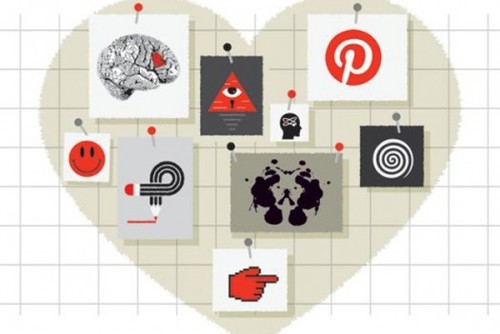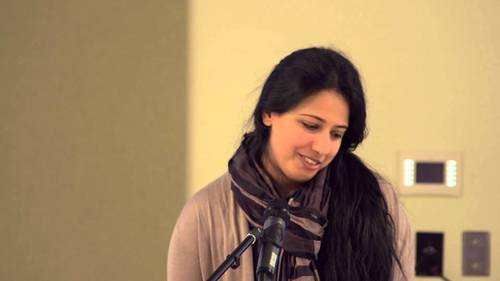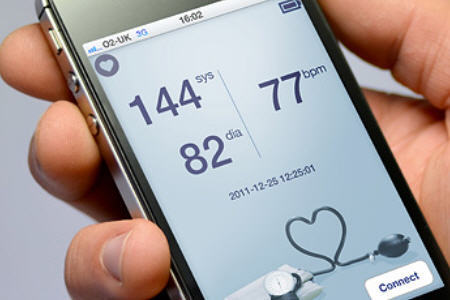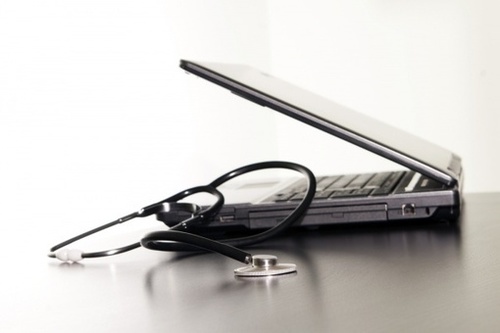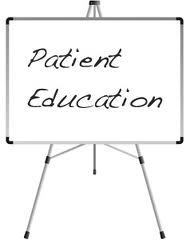Why Patient Education Materials Should Target Visual Learners
An estimated 65 percent of the population are thought to be visual learners – people who retain information better by seeing pictures and videos rather than reading text or hearing information delivered orally. In fact, the percentage of visual learners may be much higher (some studies put the figure as high as 85 percent), depending on the methodology of the study and the categories of learning styles included.
Couple that with the sobering statistics from the National Assessment of Adult Literacy showing that nearly half of American adults demonstrate low levels of literacy, and it’s clear that there is no downside to doctors incorporating high-quality visual elements into their patient education materials. Not only will you improve patients’ comprehension of their health and treatment – you may even increase compliance as well.
Read more: http://eyemaginations.com/blog/why-patient-education-materials-should-target-visual-learners
Source: eyemaginations.com
Twitter Empowers Patients to Seek and to Speak Out
See on Scoop.it – Patient Information
The ability to write something meaningful in140 characters, including a shortened URL, is the basis of Twitter. Over 500 million tweets go out every day to individuals who enjoy the simplicity, functional design, and speed of delivery that twitter offers, along with the ability to connect with others, collaborate and share ideas. To say that Twitter is viral is to understate the facts.
Twitter launched in March, 2006,has become the go to place . By the fall of 2013, there were over a billion registered twitter users who generate more than 500 million tweets daily. Since its inception there have been over 50,000,000 healthcare tweets; over 5,000 comments, and there are more than 1,000 common healthcare hastags.These tweets come from individuals, hospitals, physicians and other providers, health advocates, patients and caretakers. They offer advice and resources on every imaginable health topic from information about procedures and surgeries, to public policy and population management, to patient commentaries.
The ability to retweet someone else’s tweet and to send messages to people based on tweets merely expands the reach. Currently SPM has over 3,000 followers on twitter and the Journal of Participatory Medicine has nearly 2,000 followers. We also conduct tweet chats.
Read more: http://networkedblogs.com/TL4UM
See on networkedblogs.com
5 Ways Pinterest Can Be Used For Patient Education
See on Scoop.it – Patient Information
1. How the body works
Giving patients a better understanding of how the body works will help them understand problems they may have and the treatments that are available. It also helps patients better identify issues to communicate with their doctor when they know where things are, how they work and what they’re called.
2. How medical procedures work
When a patient understands how a medical procedure works, they may feel more comfortable getting it done. A patient who understands the procedure is also probably less likely to be as anxious about the procedure if they know what is going to happen. Patients can also be informed of procedures or treatment options that they may not have been familiar with before.
3. How medical devices work
Giving people illustrations about how a medical device works can not only help patients who are currently using the device, but can also help to bring awareness to other patients who may not have known about the device. Patients who are using the device can become more familiar with how the device is actually working.
4. General wellness and maintaining good health
Pinterest is a good way to give patients reminders about how to take care of their health, in general. Visuals can serve as reference points that can be digested easily. Imagery can also be an effective tool for conveying information in a way that resonates with patients more effectively.
5. Diseases, medical conditions, and illness prevention
Pinterest can be used to generate awareness for diseases and how they are identified and managed. Images can be used to illustrate the way a disease affects the body and what kinds of symptoms can be present. Infographics and other images serve as powerful vehicles for educating patients.
Read more: http://www.healthcarecommunication.com/Main/Articles/11866.aspx
Patient portals for hospitalized patients: Do they make sense?
See on Scoop.it – Patient Information
These five points are important to remember when we talk about patient portal use among hospitalized patients.
See on www.kevinmd.com
Video: Tips on using online health information from a patient perspective #epatient
See on Scoop.it – Patient Information
Alison Hoens is a patient/consumer living with rheumatoid arthritis and a member of the Arthritis Research Centre of Canada’s (ARC) Patient Advisory Board. S…
See on www.youtube.com
Can the most likely patient groups seeking online info find an #mhealth match?
See on Scoop.it – Patient Information
Three months ago, a Manhattan Research survey identified several patient groups most likely to use mobile devices to obtain health information. I did a little research on mhealth services that cater to specific patient needs. Although not a perfect fit in every case, I did find a surprising number of mobile health startups that have developed innovative approaches to addressing some of the 10 patient communities identified in the survey.
Acne: Several companies have developed platforms to evaluate rashes, spots and moles with varying levels of accuracy. Nonetheless, it is a hot area for innovation. Some startups have cultivated a pool of dermatologists who read emailed images to offer suggestions for a possible cause. One is DermLink.md. Another, Dermatologist on Call, lets dermatologists and patients send direct messages back and forth as a follow-up to diagnosis, treatment and consulting. It is also collaborating with Highmark Blue Cross Blue Shield in Western Pennsylvania.
Anxiety disorder: One app under development at the University of Pittsburgh, called SmartCat, is being enlisted to help young people conquer their anxiety, according to a Mobihealth News report. It is designed to supplement a short therapy regime. It uses a set of cues to remind young people of skills taught in those therapy sessions. Through a Web-based portal, therapists monitor how those skills are used. A secure message system lets therapists communicate with users in real time and incorporates a rewards system. There’s also a video library with clips teaching relaxation techniques and deep breathing exercises.
Bipolar disorder: Last year’s winner of the Heritage Open mHealth Challenge was Mood Rhythm. Although still in beta, the mobile health tool for people with bipolar disorder is prepping for a launch early this year. Its iOS and Android apps help patients monitor and analyze their sleep, social interaction and meals. It uses smartphone sensors to track daily routines and gives feedback. It also uses the information as part of clinical decision-making.
See on medcitynews.com
Researching health information online: Recognize your limitations
See on Scoop.it – Patient Information
There are certain situations in my life where I feel really stupid. One is when CNBC’s Squawk Box senior economics reporter Steve Liesman discusses the bond market. While I recognize the words he uses as English grammar, I find almost every word to be incomprehensible gibberish. Recently, he informed me that “given the Feds propensity towards quantitative easing in Q4 the 10 year yield could hit 3%.” I think that has something to do with money, and I have a suspicion that it might be important.
Another situation in which I am humbled and forced to recognize my own ignorance is when I get my oil changed. I know nothing about cars. It’s just not my thing. About half way through the visit the mechanic comes out with this round thing in his hand. He tells me it’s an air filter. He also tells me based on my past record at the Jiffy Lube that I am due to have it replaced. I realize that I do not know the current recommendations for air filter maintenance on a Jeep. While examining the filter with the mechanic I am unable to determine if the level of grime meets the criteria for replacement. Being totally honest, I am not even sure it is really an air filter or even a car part.
I am ok with this. I don’t have to know these things. We all have our areas of expertise, and there is nothing wrong with having to rely on others to get through life. Before spending the money though, I Googled the current recommendations for air filters. This was easily accessible material. It verified that based on my past history I was due for a replacement in the near future. This research helped guide my decision making. There was no misconception that I knew more than the mechanic. I used the information to ask better questions and to navigate through an area in my life in which I am uncomfortable. Ultimately, I made the decision based less on my research, but rather in my trust and confidence in the advice of the mechanic.
Read more: http://www.kevinmd.com/blog/2014/01/researching-health-information-online-recognize-limitations.html
See on www.kevinmd.com
Patient education a monster, monster problem? Here’s the solution
See on Scoop.it – Patient Information
An online article described patient education as a monster, monster problem because patients don’t understand their doctors, which leads to preventable health care expenses.
Here’s what the article said:
“Patient education is a monster, monster problem,” said Matt Berry, Orca Health’s founder and CEO.
According to company statistics, more than half of all visits to a doctor’s office don’t result in optimal care because the patient doesn’t understand what the doctor is saying. This problem, called “low health literacy,” costs the nation as much as $238 billion a year, with $73 billion attributed to hospital stays caused by a patient not understanding or adhering to a doctor’s instructions.
OK, I agree.
Then the article proposed provider-prescribed apps as a solution to this monster problem.
Huh?
I love apps. But really. This is an example of a solution looking for a problem.
The problem is that patients don’t understand their doctors. There’s a simple, effective, low-tech solution to this, based on evidence:
Ask the patient to teach back to you his or her understanding of what you just said. If the patient did not understand, explain it a different way, until the patient can understand it.
This is immediately available for use by all health care providers.
You want more than that? Encourage patients to take notes or record the conversation so they don’t have to memorize everything.
Monster, monster problem solved!
Read at: http://notimetoteach.com/2014/patient-education-is-a-monster-monster-problem/
See on notimetoteach.com
Using apps to enhance patient and family education
See on Scoop.it – Patient Information
There are lots of medical apps available for smart phones and tablets, many of which are free or inexpensive. But how do you incorporate them into clinical practice?
The good news is you don’t have to invest in fancy equipment. If you’re asking about apps, you probably own a smart phone or tablet. Your patients who will benefit most from apps own the technology already, too. So the most efficient and effective way to start is to use the technology you have, and have learners use what they have.
Next step is to find the most appropriate resources. Do not start from “what apps are available?” That would not be patient-centered. Instead, ask: What conditions do my patients have? What do I teach about? What do my patients and their families need to learn? What questions do they have? What behaviors do they need help changing to optimize health?
There are 3 places apps might be used:
1. In the clinical encounter, as you explain something.
2. During a hospitalization, to engage the patient and family in the educational process.
3. At home, to provide information and support healthy behavior changes.
Read more: http://notimetoteach.com/2013/using-apps-to-enhance-patient-and-family-education/
See on notimetoteach.com
8 Tips For a Successful Relationship With Your Doctor
See on Scoop.it – Patient Information
After two business trips that took me to Palo Alto, CA and Dallas, TX with only a week at home in between, I knew that the cold I’d had for six weeks had somehow made its way into my ears. The plane flights had shoved pressure into tender ear canals and sinuses, causing pain and congestion in both.
After trying allergy medications and decongestants for six weeks, I knuckled under and saw a doctor. I hadn’t felt good for a while and it wasn’t just the ear and sinus pain but a deep down fatigue and intermittent low fever.
Seated in an exam room, noticing the smell only well-traveled doctor’s offices have, I greeted the doctor I’d known for years. Sometimes he was moody but mostly pleasant and affable. After discussing my symptoms, Dr. Y asked about my latest book, The Take-Charge Patient. We chatted about healthcare reform and its implications for physicians.
After an exam of my ears, nose and throat, Dr. Y. said he didn’t see evidence of infection and launched into a regimen of allergy medications and seven days of steroids. He explained that inflammation and allergies were the cause of my symptoms.
“The fever too?” I explained that I’d not been feeling well for a while and had been taking allergy medications and decongestants with no success. I repeated my symptoms, adding in a few more for the sake of emphasis, because after all, I wouldn’t have been in his office if I hadn’t wanted a prescription for a-n-t-i-b-i-o-t-i-c-s, the dreaded request for many doctors.
Read more: http://martineehrenclou.com/2013/12/8-tips-for-a-successful-relationship-with-your-doctor/
See on martineehrenclou.com


